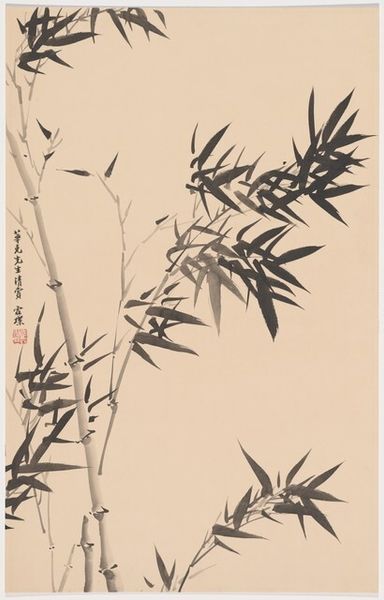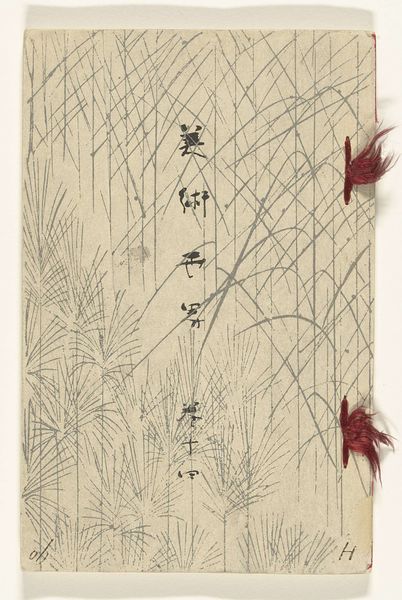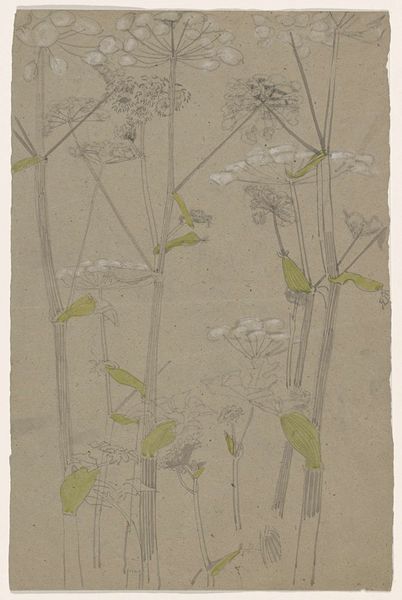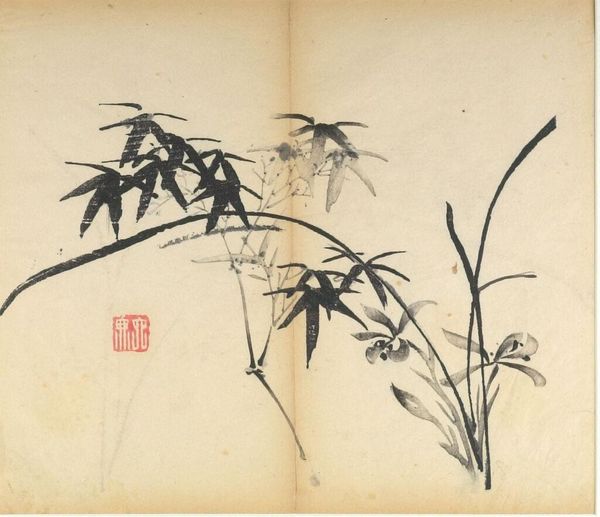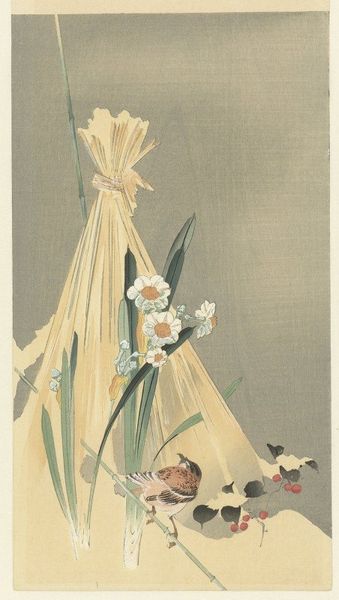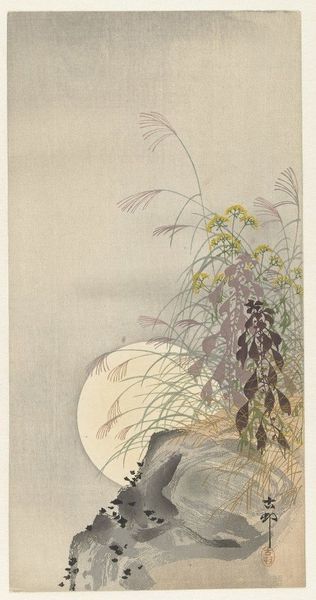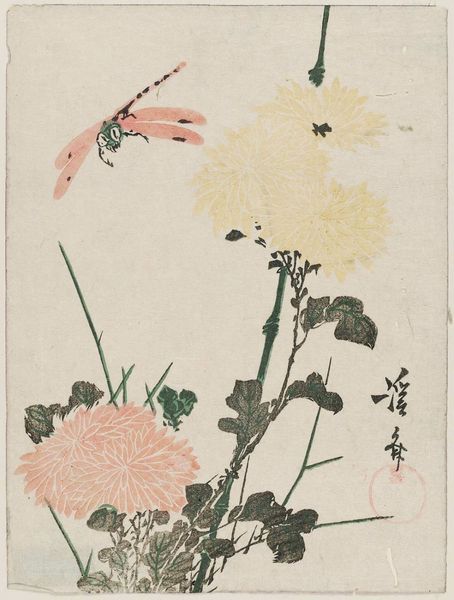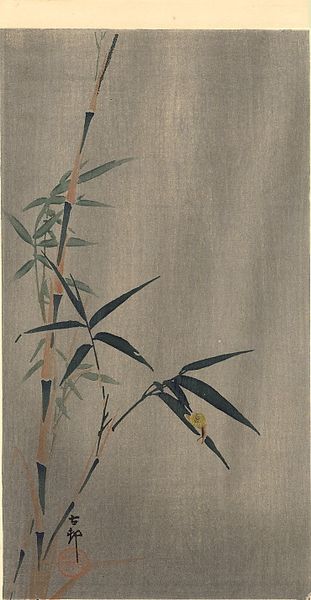
Dimensions: height 343 mm, width 187 mm
Copyright: Rijks Museum: Open Domain
Curator: This is Ohara Koson’s *Sprinkhanen op rijstplanten*, or “Grasshoppers on Rice Plants,” a woodblock print created sometime between 1900 and 1936. Editor: It's incredibly delicate. The subtle gradations of colour create a serene, almost melancholic atmosphere. The grasshoppers punctuate the stillness. Curator: The composition is brilliant in its simplicity, isn't it? Koson's masterful control of line and form is quite evident. Note the careful arrangement of the rice stalks creating dynamic lines throughout the plane. Editor: Agreed, but I'm also thinking about the labour involved in its creation. The crafting of woodblocks requires highly skilled artisans to transfer the artist's design to the block and then carve with immense precision. This collaborative element makes it special. Curator: Indeed, ukiyo-e prints were a collaborative enterprise. Now, regarding subject matter, we cannot ignore the historical and environmental context surrounding Koson’s work; in this artwork, a tension emerges, reflecting both nature's beauty and agriculture practices and labour-intensive means to secure crops. Editor: And thinking about the natural pigments used; where did they source them? How sustainable were they? Were any hazardous to the artisans that mixed or applied them to the wooden printing blocks? And these details aren't often part of formalist discussions. Curator: I concede your point. These prints, intended for mass consumption, connect us to global trade routes that influence the materiality of production. Ultimately, that intersection gives way to discourse regarding art’s status itself. Editor: It adds layers of meaning to a seemingly simple composition, doesn't it? These "simple" scenes often carried immense social and cultural significance within the Edo period and onward. I suppose there is more at play here than nature imitation. Curator: I'd say it provides a space to engage on topics of environment, material culture, and labour in an increasingly industrialising world, which is certainly compelling. Editor: Exactly, and I believe it challenges us to consider not only what we see, but how it was brought into being and consumed in its era. Thank you for enriching the conversation, offering a fresh perspective on the subject.
Comments
No comments
Be the first to comment and join the conversation on the ultimate creative platform.


